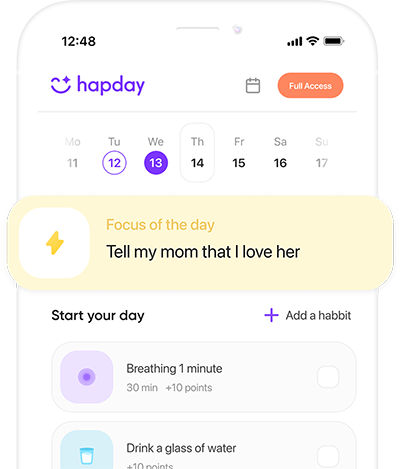Let’s talk ADHD, ‘kay? That swirling trio of inattention, hyperactivity, and impulsivity messing with millions of lives out there. Not an easy ride. And guess what? It often whirls people—especially those juggling adulting and those ADHD symptoms—right into burnout city. It’s kinda like running a mental marathon without signs of a finish line. But here comes the bright side, there are some nifty self-care strategies we can explore to dodge that ADHD burnout trap. So, let’s dive into some insights that can help Gen Z and Millennial women navigate through this chaos and emerge victorious.
Table of Contents
- Understanding ADHD Burnout
- Establishing a Routine
- Prioritizing Sleep
- Mindfulness and Meditation
- Physical Activity
- Nutritious Diet
- Setting Realistic Goals
- Seeking Support
- Practicing Self-Compassion
- Limiting Screen Time
Understanding ADHD Burnout
Burnout kicks in when living with ADHD feels like spinning plates—and they all crash to the floor. It’s that overwhelming cloud of fatigue, stress, and “can’t-do-another-day” vibes. In fact, research in the Journal of Attention Disorders (Kooij et al., 2020) warns us that ADHD folks are wired with a hair-trigger for stress. Spotting burnout symptoms like chronic tiredness, endless frustration, or feeling buried under tasks is crucial. Self-awareness? Yeah, that’s step one.
1. Establishing a Routine
You know how a good tune needs some rhythm? Well, having a routine does something similar for those tackling ADHD. Turns out that setting up a predictable daily pattern can take the edge off the chaos blues—like turning noise into harmony. Scribes like Nigg and Barkley (2021) back this up with some serious science. So, experiment with planners or snazzy apps to line up your tasks. Remember to sprinkle in breaks—they’re like pit stops in a frantic race. This isn’t about turning into a robot, but more about wresting control from decision overload.
2. Prioritizing Sleep
Ah, sweet sleep! If only… but for ADHDers, it’s a rocky relationship. The American Journal of Psychiatry (Cortese et al., 2021) mentions that sleep disturbances are just annoying extended family members of ADHD symptoms. Getting quality sleep amps up mood and energy levels, so setting a nighttime ritual (no screens, fluffy pillows, maybe some lavender oil?) can work wonders. Drift off to dreamland in peace, and wake up recharged.
3. Mindfulness and Meditation
Ever tried just being—without the buzz? Mindfulness kinda gives you that calm harbor. A bit of meditation can peel away stress like layers from an onion. Zylowska et al. (2008) charted improvements in focus and emotional stability with mindfulness… Not an instant fix, sure, but a daily session to breathe and simply exist can tame the frantic chase of ADHD.
4. Physical Activity
Hit the gym, bounce around in a dance class, or maybe jog through your favorite park. Movement isn’t just for the body, it does wonders for the mind too. Physical activity hikes up dopamine, a crucial player often MIA in ADHD (Ratey & Loehr, 2011). Find the magic in feeling your heartbeat sync to something joyous and aim for 30 minutes, most days.
5. Nutritious Diet
Don’t forget what’s on your plate—that matters. Eating the right stuff is like fueling your car with premium fuel. Stock up on omega-3s, proteins, and good carbs to keep your mind’s engine purring (Stevens et al., 1995). Plenty of colorful veggies, some lean chicken, and grains should do the trick. A healthy diet just might be the silent antidote to those burnout feelings trying to sneak in.
6. Setting Realistic Goals
Big goals are cool and all, but they sometimes come with burnout as a nasty twin. Instead, break things down. Think of them as stepping stones rather than leaps across an impossible chasm. Biederman et al. (2008) suggest that reaching small milestones circles back with a dopamine boost—and who doesn’t love a double whammy of motivation and focus?
7. Seeking Support
Being able to shout into the void and have it shout back “We’re in this together!”? Invaluable. Engage with online or local support groups who vibe with your ADHD challenges. The Journal of Clinical Psychology (Wilens et al., 2011) says social support isn’t just fluff; it’s potent stress relief for those riding the ADHD rollercoaster.
8. Practicing Self-Compassion
Give yourself some grace. Self-compassion is about treating yourself as you would a dear friend, especially when times get rough. Neff et al. (2007) showed it’s linked to lower anxiety and depression levels. So when mistakes happen—and boy, they will—gentle reminders to self-love can be powerful.
9. Limiting Screen Time
Ah, screens—the endlessly tempting little suckers. But too much screen time can make ADHD symptoms worse. Try setting boundaries, especially during nighttimes, to keep focus and sleep in good shape. Have a screen time detox every now and then. Trust me, your braincells will thank you.
Conclusion
Confronting ADHD burnout requires a symphony of practices—routines, quality sleep, mindfulness, delicious diet choices, you name it. By plotting realistic goals, leaning on others for support, practicing self-kindness, and dialing down screen time, you carve a pathway towards wellbeing. With these strategies imbibed in day-to-day life, mental health and general vibe can soar into the positive.
Ready to enhance your self-care arsenal with tailored support? Oh, and speaking of support, make sure to explore all that Hapday has to offer in this journey by hopping over to Hapday.
Cheers to finding your balance!

